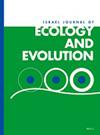气候变化对印度西高塞特有种濒危维管植物肉桂生境适宜性的影响
IF 0.8
4区 环境科学与生态学
Q3 ECOLOGY
引用次数: 0
摘要
摘要/ Abstract摘要:西高塞山脉(WG)高海拔地区(1500 - 3500 m)和湿润环境(600-850 hPa)的极度濒危维管植物肉桂(Cinnamomum travancoricum)的栖息地正因气候变化(CC)、草食动物数量增加、城市化和过度开发而缩小。在代表性浓度路径(RCP) 4.5和8.5两种排放情景下,利用MaxEnt模拟了肉桂在2030年、2050年和2070年的栖息地现状和预测范围变化。利用19个WorldClim生物气候变量,包括坡度、坡向、高程数据和16个空间分散物种发生点,对潜在分布进行了预测。Jackknife检验确定了“等温线”、“平均日差”和“最干旱月降水”是模拟栖息地和范围变化的最具影响力的变量。该MaxEnt模型准确,曲线下面积(AUC)值为0.995。该生态模型预测了适宜生境的范围大幅缩小,“高度适宜”和“中等适宜”生境在RCP 8.5中缩小了100%,证实了砂冠草对CC的影响非常脆弱,使其成为WG的重点保护物种之一。研究认为,恢复现有保护区、建立专门的保护区、连接栖息地和对当地社区的进一步教育是保护的关键适应策略。本文章由计算机程序翻译,如有差异,请以英文原文为准。
Climate change impacts on habitat suitability of Cinnamomum travancoricum (Lauraceae), a critically endangered endemic vascular plant in the Western Ghats, India
Abstract The habitat of Cinnamomum travancoricum , a critically endangered endemic vascular plant that thrives at high altitudes (1,500–3,500 m asl) and in moist environments (600–850 hPa) in Western Ghats (WG), is shrinking due to climate change (CC), increase in herbivore populations, urbanization, and over-exploitation of C. travancoricum . Cinnamomum travancoricum ’s current habitat and predictive range shift were modeled using MaxEnt for 2030, 2050, and 2070 CE under two emission scenarios: Representative Concentration Pathways (RCP) 4.5 and 8.5. The 19 WorldClim bioclimatic variables, including slope, aspect, elevation data, and 16 spatially dispersed-species-occurrence points, were used to predict the potential distribution. Jackknife test identified ‘isothermality’, ‘mean diurnal range’, and ‘precipitation of the driest month’ as the most impactful variables for modeling the habitat and range shift. This MaxEnt model was accurate with an area under curve (AUC) value of 0.995. This ecological model predicted a substantial range contraction in suitable habitats, with ‘highly suitable’ and ‘moderately suitable’ habitats shrinking by 100% in RCP 8.5, confirming that C. travancoricum is highly vulnerable to the effects of CC, making it one key species for conservation in WG. The present study suggests the restoration of existing protected areas, creation of specialized reserves, habitat connectivity, and further education towards local communities as the key adaptation strategies for conservation.
求助全文
通过发布文献求助,成功后即可免费获取论文全文。
去求助
来源期刊

Israel Journal of Ecology & Evolution
环境科学-进化生物学
CiteScore
2.10
自引率
0.00%
发文量
7
审稿时长
>36 weeks
期刊介绍:
The Israel Journal of Ecology and Evolution includes high-quality original research and review papers that advance our knowledge and understanding of the function, diversity, abundance, distribution, and evolution of organisms. We give equal consideration to all submissions regardless of geography.
 求助内容:
求助内容: 应助结果提醒方式:
应助结果提醒方式:


